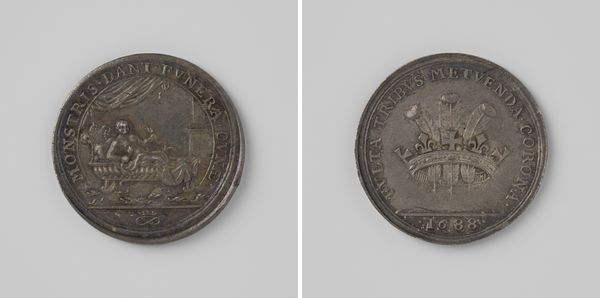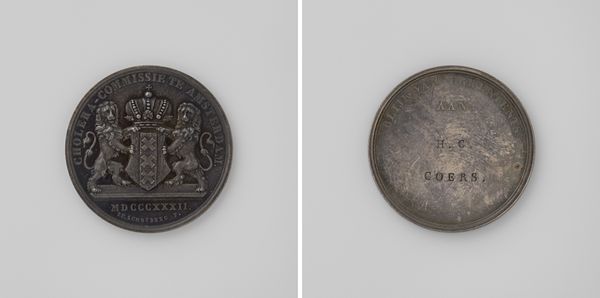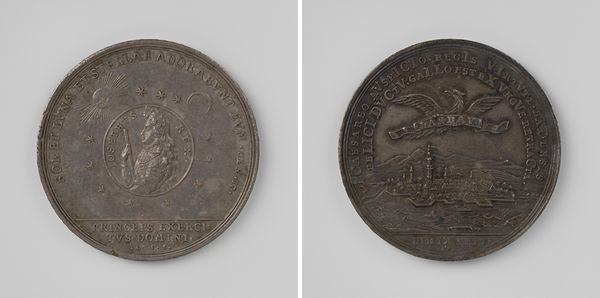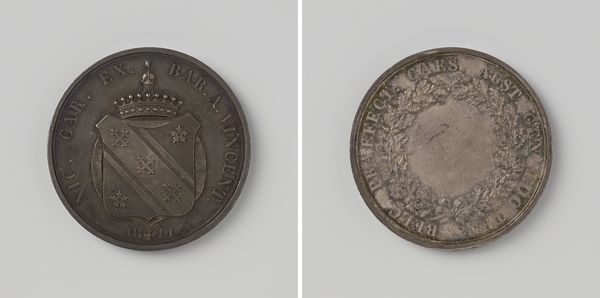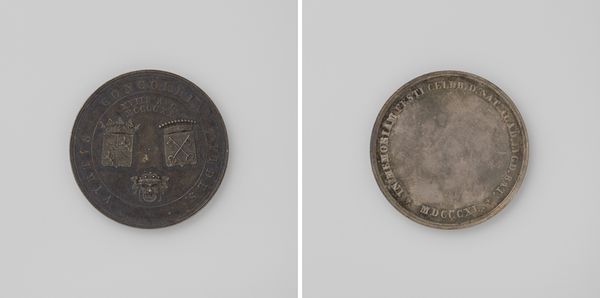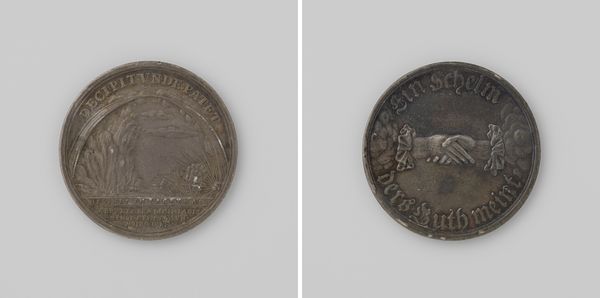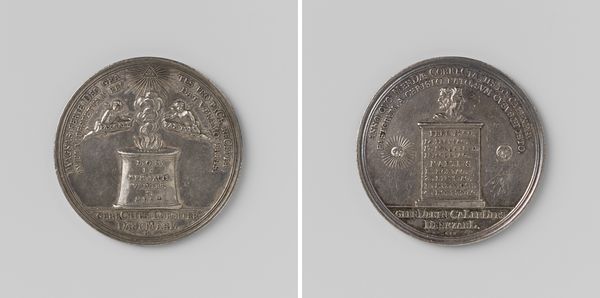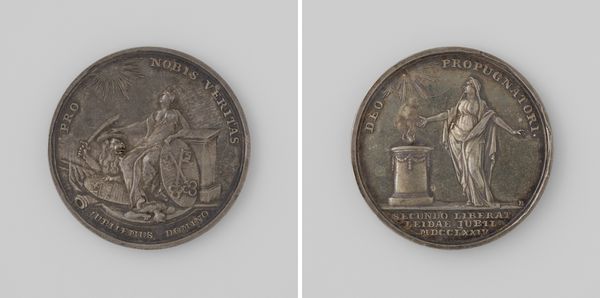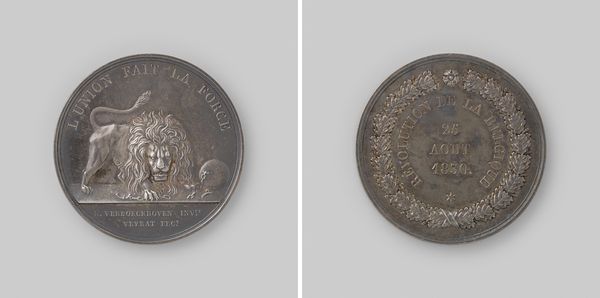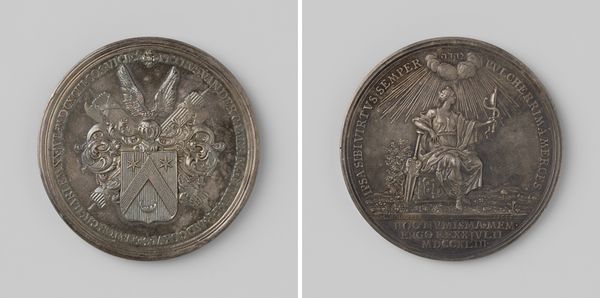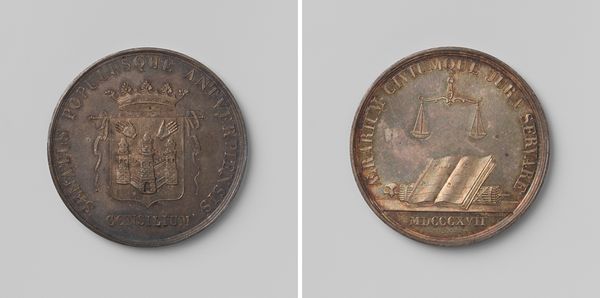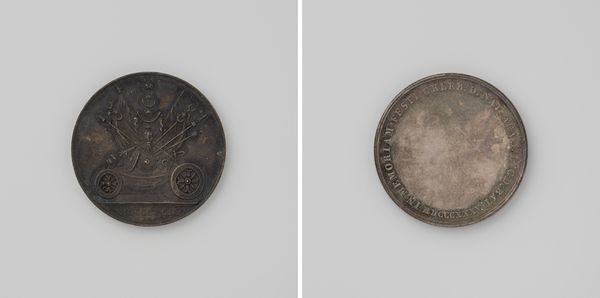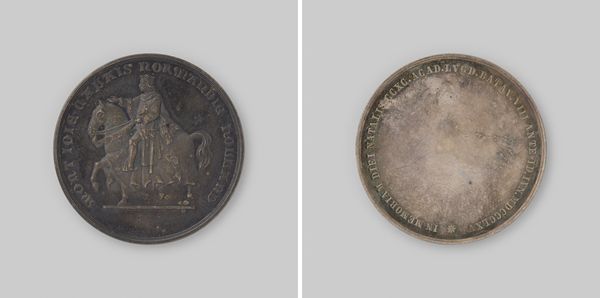
Erepenning voor de wijkmeesters te Amsterdam bij de choleraepidemie 1832 1832
0:00
0:00
metal, relief, sculpture
#
portrait
#
dutch-golden-age
#
metal
#
sculpture
#
relief
#
sculpture
#
history-painting
Dimensions: diameter 3.0 cm, weight 6.58 gr
Copyright: Rijks Museum: Open Domain
Curator: Before us we have the "Erepenning voor de wijkmeesters te Amsterdam bij de choleraepidemie 1832," a medal commemorating the district masters of Amsterdam during the cholera epidemic of 1832. Johannes Petrus Schouberg crafted it from metal, utilizing a relief sculpture technique. Editor: My initial impression is somber. The piece, though small, radiates a sense of civic duty and the weight of responsibility during a public health crisis. The choice of metal adds to the gravity. Curator: Absolutely. Medals often act as material embodiments of intangible ideas. Notice the lions flanking the crowned coat-of-arms on one side. Lions in heraldry, and even earlier symbology, are age-old metaphors of power and courage, fitting considering the situation. Editor: These symbols do reinforce conventional ideas about power. It would be fruitful to research the extent to which these civic figures diverged in reality from the traditional images of male, powerful saviors that we are likely seeing reflected here. Curator: The inscription that rings around this shield further emphasizes the solemnity of its purpose. It speaks directly to its intended audience: those who witnessed first-hand the grim realities of the epidemic, and the important part these particular persons took during that crisis. Editor: This piece feels like a stark reminder of the deep inequalities that public health crises expose. Who exactly did these 'wijkmeesters' protect and how might their actions have mirrored broader social biases? Whose stories aren't included here? Curator: I agree, though this medal represents a specific, laudatory viewpoint, understanding its production—commissioning, design—tells of who controlled and shaped public memory at the time. Such a study gives this little artifact profound socio-historical implications. Editor: Indeed. As an activist, I want to remind us how these historical accounts should invite a call for contemporary public service: we can carry these forgotten burdens by advocating and fighting for an inclusive future that these leaders seemingly promised, even as inequities still linger. Curator: It serves as a cultural memory capsule; it reminds us how a crisis reshapes communal memory and collective action. The symbolism connects us, as humans, to our deep and enduring values during periods of both terror and communal heroism.
Comments
No comments
Be the first to comment and join the conversation on the ultimate creative platform.
